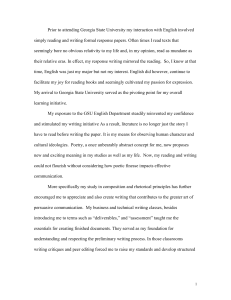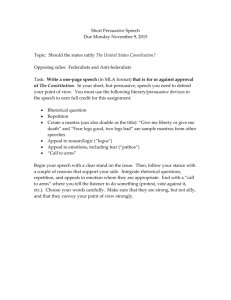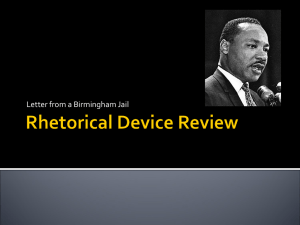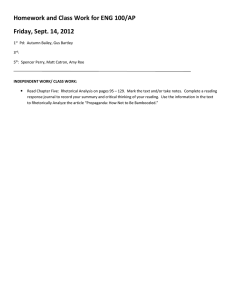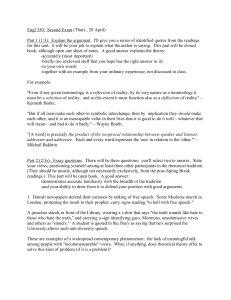Writing Arguments
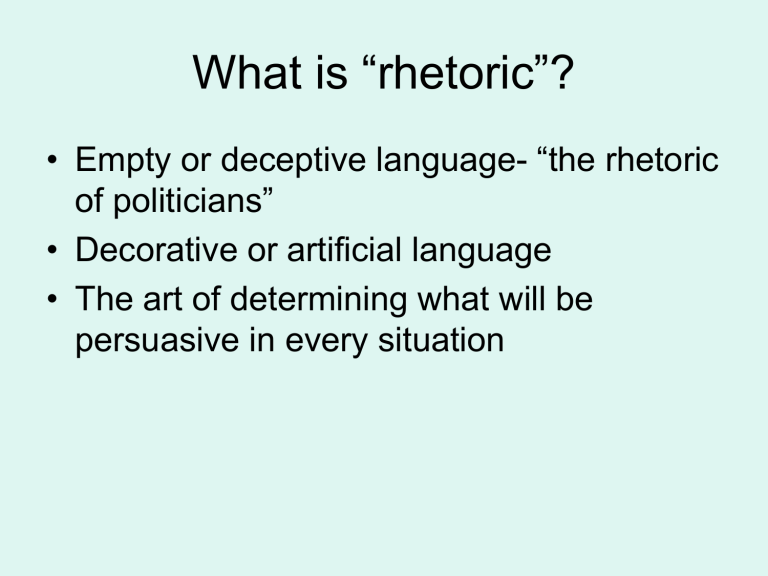
What is “rhetoric”?
• Empty or deceptive language- “the rhetoric of politicians”
• Decorative or artificial language
• The art of determining what will be persuasive in every situation
What is rhetorical analysis?
• To analyze an argument rhetorically means to examine closely how it is composed and what makes it an effective or ineffective piece of persuasion. A rhetorical analysis does 4 things: identifies the piece under scrutiny, summarizes its main ideas, presents some key points about the text’s rhetorical strategies, and elaborates on these points.
Why rhetorical analysis?
• To develop your ability to read complex texts critically
• To apply the strategies of effective argumentation to your own arguments
• To prepare you as a citizen to distinguish sound, ethical arguments from manipulative, unreasonable ones
What can we analyze rhetorically?
• Written arguments- editorials, articles, speeches, etc.
• Visual arguments- photographs, charts, graphs, advertisements
• Film- a blending of written (script) with visual elements
The Rhetorical Triangle
Visual argument & rhetoric
• Four basic components of visual design: use of type, use of space and layout, use of color, and use of images and graphics.
• Examine the two advertisements about ecstasy, and discuss the four questions on page 181 with your group. Be prepared to share your answers with the class.
Use of color, images and graphics
• Color can contribute significantly to the visual appeal of an argument, by moving readers emotionally and imaginatively
• The appeal of colors to an audience and the associations that colors have for an audience are also important
• Images can be memorable; clarify ideas, add depth, liveliness, and emotion; juxtaposition of images
Analyze the persuasive power of the following images.
What is the primary appeal?
How do images and color help convey the message?
Political cartoons
• Cartoons often sum up a worldview in a single image. What mini-narrative does the following cartoon convey? What is the cartoon arguing?
Time to practice!
• Using the handout provided, complete an analysis of one of the following poster advertisements from World War II.


